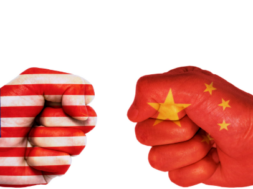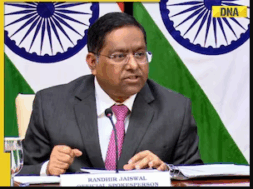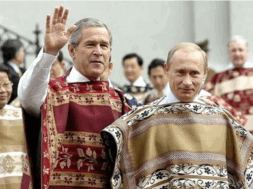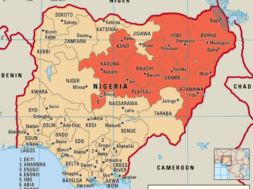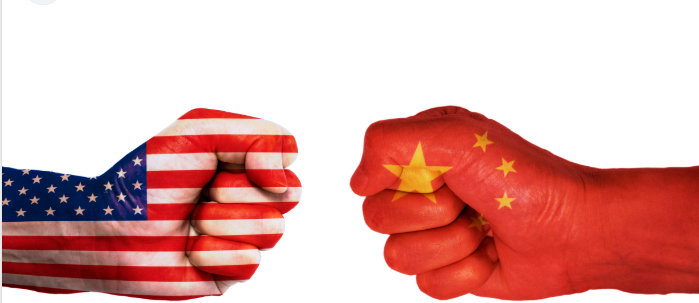
Trump’s tremors: India for early deal, China begs with EU, ASEAN, others
Virendra Pandit
New Delhi: A day after Union Commerce Minister Piyush Goyal remarked that the current turmoil in the financial world is mainly because of China’s policies over the years, India seemed ready to quickly sign a deal with the US on the trade and tariff-related issues.
The White House had also revealed that Japan, South Korea, India, and Vietnam, among other countries, were looking for early trade deals with America.
India wants to move quickly on a trade deal with the United States after President Donald Trump’s stunning decision to pause hefty reciprocal tariffs on dozens of countries, while hiking levies on China, the media reported on Thursday.
India and the United States had agreed in February 2025 to work on the first phase of a trade deal to be wrapped up by autumn 2025, aiming to reach two-way trade worth USD 500 billion by 2030.
“The 90-day pause on reciprocal tariffs is a relief for Indian exporters, especially shrimp exporters,” an official was quoted as saying.
“India is among the first nations to start talks over a deal with the US and to have a jointly agreed deadline to conclude it.”
On Wednesday, Trump temporarily lowered duties on trading partners including India, just 24 hours after imposing steep tariffs that unleashed the most intense episode of financial market volatility since the early days of the COVID-19 pandemic in 2020.
To keep up pressure on China, however, Trump said he would raise to 125 percent the tariff on imports from Beijing. But the US reciprocal tariff on India stands at 10 percent.
Amid rising market panic and economic uncertainty, Trump’s sharply escalated duties on Chinese imports to 125 percent aimed at isolating the trade conflict with China rather than continuing a global standoff. Trump cited outreach from over 75 countries for trade talks as the reason for his partial pullback, announcing a reduced 10 percent baseline tariff during the pause—still higher than previous levels. Some markets cheered the shift, with the S&P 500 jumping over 9 percent.
However, Trump’s plan for non-China trade partners remains vague. Treasury Secretary Scott Bessent said countries like Japan, South Korea, India, and Vietnam are seeking negotiations. While the administration framed the move as a strategic pause, critics see it as a response to deepening recession fears, bond market turmoil, and plummeting business confidence. The broader economic impact of Trump’s evolving tariff strategy remains uncertain.
Despite its bravado and rhetoric, however, China appears rattled, given its post-COVID economy had barely started recovering. So, Beijing is reaching out to other nations to form a united front to compel Washington to retreat.
However, China got only partial success as many countries are unwilling to ally with the main target of President Donald Trump’s trade war.
China has refused to seek talks, saying it would “fight to the end” in a tariff war, prompting Trump to further jack up the tax rate on Chinese imports to 125 percent. China has retaliated with tariffs on US goods of 84 per cent, which took effect Thursday.
Trump’s move was seemingly an attempt to narrow what had been an unprecedented trade war between the US and most of the world to a showdown between the US and China.
With Trump pausing for 90 days, the European Union (EU) delayed its countermeasures and braced for possible negotiations, said EU chief Ursula von der Leyen.
Meanwhile, before Trump’s pause, Chinese Commerce Minister Wang Wentao and European Commissioner for Trade and Economic Security Maros Sefcovic held discussions via video on Tuesday and discussed enhancing China-EU economic and trade cooperation and responding to the “reciprocal tariffs” imposed by the US, Xinhua reported.
The EU and China are each other’s largest trading partners. During their talks, Wang noted that the US “reciprocal tariffs” seriously violate the legitimate interests of other countries, breach the WTO rules, undermine the rules-based multilateral trading system, and disrupt the stability of the global economic order.
Wang said the US move is typical “unilateralism, protectionism and economic bullying.” China is willing to resolve disputes through consultation and negotiation, but it will fight to the end if the United States continues to act wilfully.
China and EU agreed to start consultation on issues concerning market access at an early date, and immediately start negotiations on electric vehicle pricing commitments as well as issues related to bilateral investment cooperation in the auto sector as per the official Xinhua agency.
Beijing is reaching out to the EU and ASEAN countries to forge a united front and force the US to backtrack. Beijing has retaliated with “countermeasures” imposing an 84 per cent tariff on US goods, taking effect on Thursday. The 27-nation EU bloc also hit back at Trump’s tariffs on Wednesday by approving levies of up to 25 percent, which may have prompted the US President to pause the tariffs.
China and the EU vowed to jointly uphold the multilateral trading system with the WTO at its core, China’s commerce ministry said in a statement.
